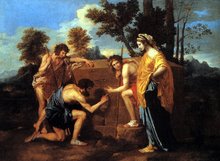
The image above depicts Thoth, the Egyptian God of Wisdom although his status as a God has been questioned, as egyptologists in the 19th century were at loggerhead over whether all Egyptian Gods were revered separately or whether they merely represented aspects of a single deity, Ra! In the latter respect Thoth was Ra's representative on Earth so to speak, and a mouthpiece for the will of Ra to be communicated to the Egyptian people.
In previous posts I alluded to the posibility that the Egyptian pantheon may have had some basis on reality, and how quick egyptologists were to accept the parts of Egyptian historical records which could be proven while being as quick to refute the parts that might seem mythological, because to suggest that they were open to such concepts would be career suicide.
However, it should be clearly noted that the history of egyptoplogy is littered with theft, fakes, double dealings and worst of all plain lying about Egyptian ancient history. By far the worst culprit must have been Colonel Howard Vyse, who's desperate and expensive search for treasure in the Great Pyramid appeared to come to nought. His final resort was to blast his waty through the relief chambers above the King's chamber. On reaching the final chamber he entered alone at night and on re-appearing the next day, reported that he had made a great discovery.
What had he found? The only written text in the Great Pyramid. Apparently some workman had had the foresight to write the cartouches of Khufu (Cheops) and his co-regent and brother Khafra on a ceiling block. This was fortunate proof that the pharaoh Khufu thought to have been behind the building of the Great pyramid, was indeed responsible and this has been accepted as truth ever since. One problem! The hieroglyphics in the cartouche would have disgraced a child and were clearly faked by Vyse during his night-time vigil in the chamber. The hieroglyphics were often inverted and since the knowledge of hieroglyphics was still relatively infant at that time, it was later seen that those used came from several different dynastic periods. The books on hieroglyphics available in Vyse's time however didn't demonstrate this as it was only to be discovered later.
A stelae discovered between the paws of the Sphinx has been used as evidence that Khafre built the Sphinx, when it indicates nothing of the sort. It merely commemorates his tidying it up, probably clearing away of sand and some minor repair work. However the entire dating of the Giza plateau and all of it's ancient wonders is based on these two written discoveries. Neither of which is actually relevant. Clearly the people who created the Sphinx and built the Great pyramid either did not possess the skill of writing or were not permitted to employ it there. This would indicate to me, and to other very notable people, that the constructions there are much older than what we've been told they are. One day the truth will out!








